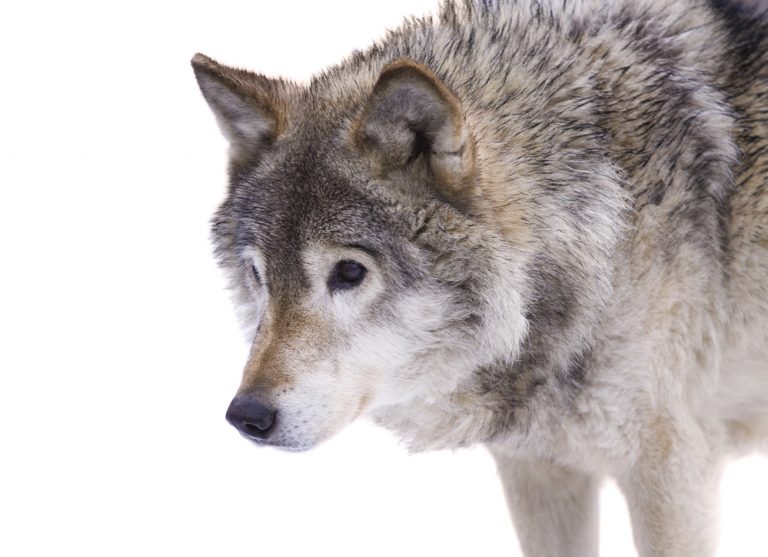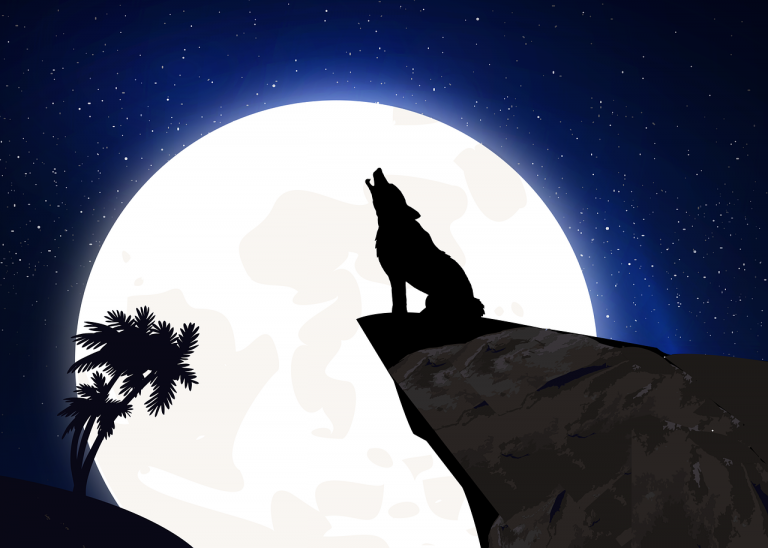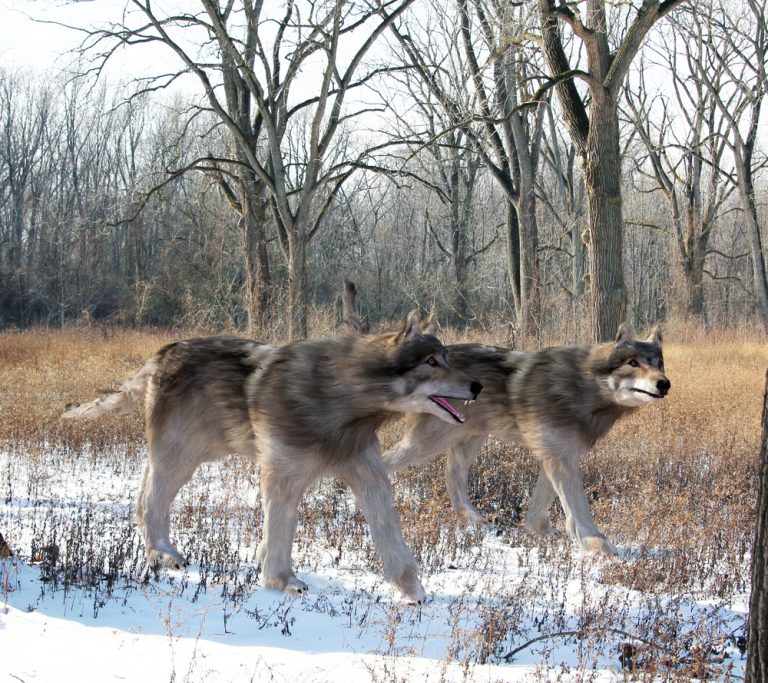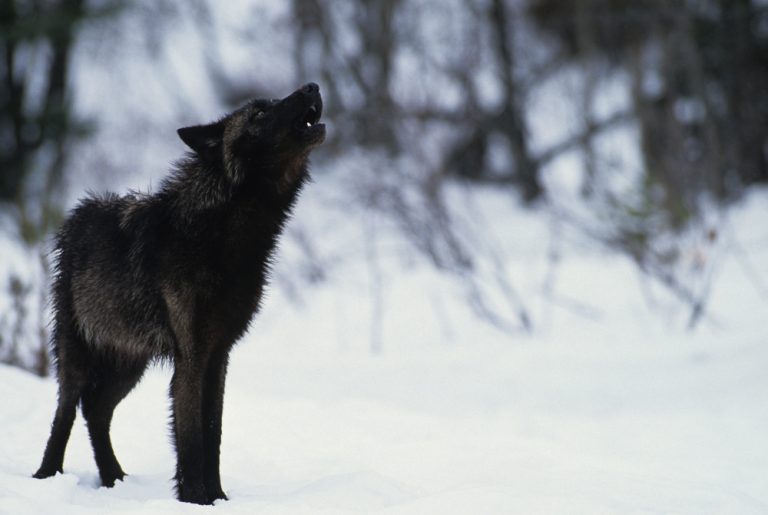Wolves Versus Wolverines: An Analysis Of Two Land Predators
Wolves and wolverines are both powerful predators. Here’s what happens in wolves versus wolverines clashes.
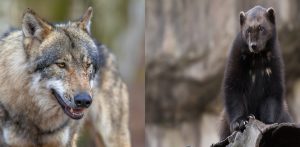
Both wolves and wolverines are two species with similar characteristics. In fact, because of their similarities, wolverines were previously thought as belonging in the wolf family. But that’s wrong.
They actually belong in the weasel family.
These two categories of animals are known to be fierce and powerful predators. But how do they compare against each other? Let’s find out.
Wolf Facts
There are four species of wolf alive today with several subspecies, the most popular species being the Gray wolf (Canis Lupus). They are members of the Canidae (dog) family and the largest single extant member of the family. This species is famed for its pack based organization, which consists of between 5 to 11 members.
However, at times the two or more packs may come together to form a single pack with up to fifty individuals.
Wolves grow up to an average length of between 105 and 160 cm (41 to 63.5 inches), with a shoulder height of 80 to 85 cm (31 to 33 inches). Their weight varies between 25 kg (55 lbs.) and 40 kg (88 lbs.). These variations are as a result of the different sizes across the different subspecies.
Wolverine Facts
The wolverine (Gulo Gulo) is a member of the Mustelidae (weasel) family. Notably, it is the largest member of the family on land, with the other larger members of the Mustelidae, otters, spending most of their time in the water. They are fairly solitary animals mostly coming together to mate.
This is a very muscular, aggressive and powerful carnivore that looks like a small bear. Their preferred prey includes beavers, squirrel, porcupines, wolf pups, and rabbits. They are even known to kill much larger animals in a one-on-one fight.
Wolverines will grow up to an average length of between 65 and 110 cm (26 to 45 inches). Records show an average shoulder height of between 30 and 45 cm (12 to 18 inches). The weight range of an ordinarily sized wolverine is between 9 to 25 kg (20 to 55 lbs.)
Wolves Versus Wolverines: Where Do They Meet?
Wolverines are considered rarer than wolves. Whereas wolves inhabit various habitats, wolverines are predominant in the northern hemisphere.
Though wolves still have a wider range spanning most continental zones of the world. The larger sized subspecies of the wolves are mostly found in North America, Russia, parts of Europe as well as Greenland. The smallest, rarer subspecies largely inhabit the southern hemisphere of Asia, India and South-Eastern China.
However, most of the northern parts of Canada, Alaska, Western Russia, and Siberia where wolverines live is also wolf territory. Consequently, this geographical proximity, provides a point of convergence, and conflict.
Wolves Versus Wolverines: The Battle For Prey
The search for prey is one of the key points of convergence for both species since they are both carnivorous in nature. Both wolves and wolverines feed on all manner of prey ranging from moose to small mammals such as rats and hare.
Moreover, both species will at times take to feeding on insects, birds, eggs, and fish to supplement shortage in prey.
Due to their feeding habits, wolves and wolverines have formed a queer relationship. Wolves are more of active hunters of prey. Wolverines, on the other hand, are more of scavengers and as a result, depend on other animals for carrion.
As a result, wolverines can be seen feeding on leftovers from wolf hunts. At times, especially during dry cold seasons, this presents a challenge. Lack of readily available prey leads to wolf packs guarding the carrion for repeated feeding. This denial of access to carrion leads to wolverines trying to snatch pieces of carrion.
Often, the wolf pack ends up killing wolverines as they try to steal their kill. The wolves then feed on the wolverines that they kill.
Wolverines Can Kill Wolves Too
Though wolverines are scavengers, that does not limit their hunting abilities in any way. No doubt, wolverines are very powerful and vicious. They have very powerful body musculature covered by a thick and tough hide.
Coupled with their extremely potent dental structure and sharp claws they are as dangerous to wolves as they are to their prey. Wolverines also overpower and kill wolves in the wild: even the gray wolf.
They can chase wolves away from their kill and resort to extreme violence if the wolves put up too much resistance.
Wolverines have been seen chasing away whole wolf packs!
They are also very lithe even in deep snow, and are able to run up to speeds of 28 km/h in chase of prey. In addition, they have an edge over wolves: they can climb trees easily. This gives them a vantage hunting spot and the element of surprise since they can swoop down on a wolf if need be.
Inter-Species Fights
Fights between two members of these species are rare but they happen. This is most probably because wolves are rarely found alone. The tendency of wolves to stay in packs gives them an upper hand in case of aggression from wolverines.
Since wolverines are small solitary animals, their ability to ward off attacks from multiple fronts is highly limited. Nonetheless, the reported case of wolverine deaths from attack by wolf packs points to a ferocious animal unrelenting in its feeding goals. Primarily fighting over food, the two species have not been known to fight over any other resource.
Wolves Versus Wolverine: Which Would Win In A Fair Fight?
First, packs of wolves versus wolverine fights are not fair fights. That’s more of a survival fight for the wolverines.
Wildlife enthusiasts have always speculated on what would happen if an individual wolf was paired against a wolverine. For such an occasion certain facts have to be taken into account.
Wolves are generally larger than wolverines.
In terms of power and bite force, wolves dominate with an average of 136 against the wolverine’s 105. All these points are cognizant of one major survival rule: size generally rules.
The above facts notwithstanding, reports of a wolverine fighting an adult grizzly bear underlines the wolverines will. In addition, there are numerous, but unconfirmed reports of a wolverine killing an adult polar bear. Absolutely amazing.
If you add the potency of the wolverine’s 90-degree turning hind molars and the retractable claws the odds may turn in favor of the wolverine in a one-on-one against a large species like the gray wolf.
Since no individual fights have been recorded between the two species, it remains to be seen which animal will prevail over the other. Be that as it may, the possibility of a wolverine winning in a solitary fight against a wolf appears achievable. Especially when you consider that the wolf is used to hunting in packs.
The ability of the small animal, the wolverine, to kill large animals such as the full sized elks and moose, for food, and possibly a polar bear is further proof that it cannot be underrated.
Interactions With Humans
Both animals have been hunted over the years for various purposes.
Wolves for more reasons ranging from the use of their furry skins, to conflicts and clashes, and taming. Tamed wolves are used for tracking during hunting as well as driving of sleighs. Wolverines are however hunted for their tough furry skin.
In terms of danger to human beings, wild wolves have always posed a larger risk to human populations. Attacks by wolves are rare occurrences but they do occur annually. The danger varies from minor injuries to fatal deaths.
Wolverines, on the other hand, pose a much smaller danger due to their solitary nature. There are no documented cases of attacks of wolverine upon human beings.
So even while considering the outcome of wolves versus wolverines fights, a wild wolf would probably be of more concern to your safety than a wolverine.



